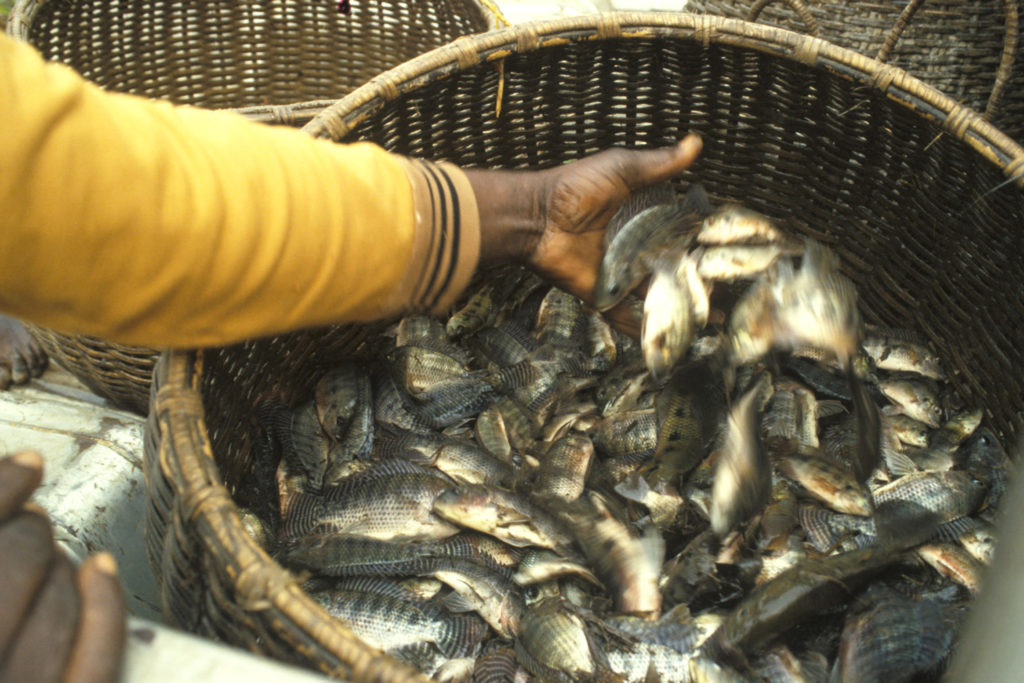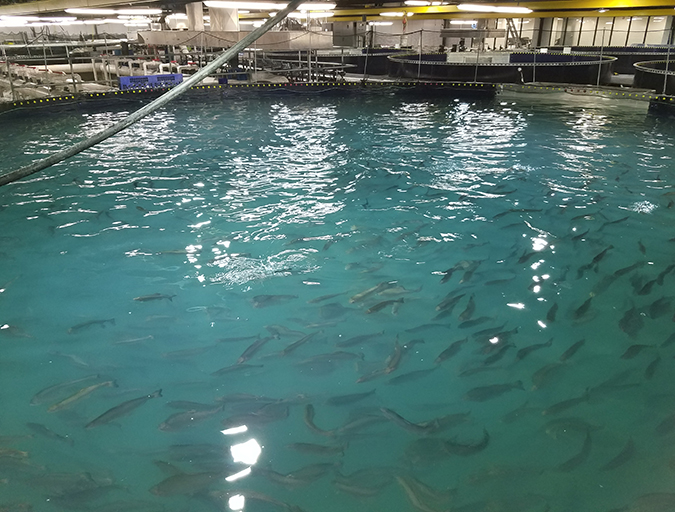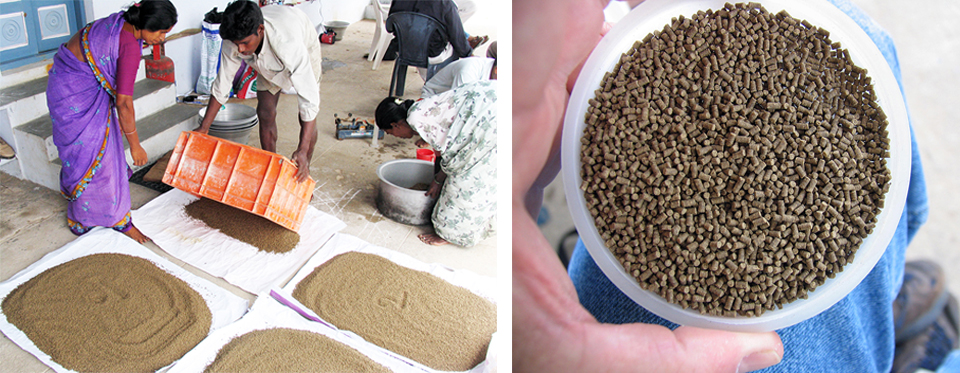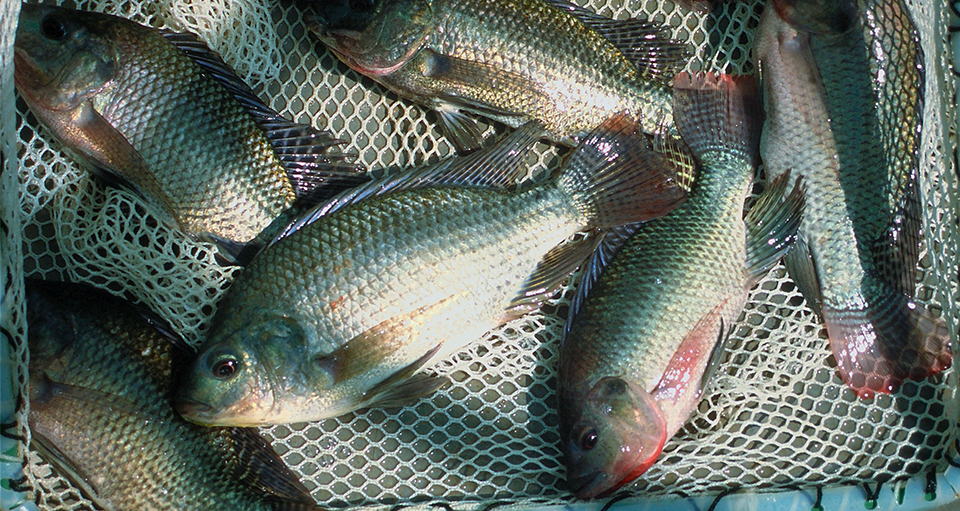Current trials use a light-colored strain of mixed-sex juvenile Nile tilapia that originated from Egypt.While freshwater resources throughout the Persian Gulf region are limited, small-scale tilapia culture has been successfully introduced in Kuwait and Saudi Arabia, and tilapia have been widely distributed for use in malaria-control programs. Tilapia culture is also being evaluated as a potential new activity on traditional farms in Oman.
Following initial requests from fruit and vegetable farmers suffering the effects of saltwater intrusion into their groundwater supplies, a program of participatory research on selected farms was established in Oman. The program draws heavily on the active cooperation of interested farmers.
In exchange for advice and direct assistance, the farmers provide a share of costs and facilities and in turn own and sell the fish produced. Aquaculture and crop production specialists from the Sultan Qaboos University in Al-Khod, Oman, have complete access to the sites to conduct experimental work and gather data from which production models can be devised.
Experimental approach
The main objective of this farmer-based project is to evaluate tilapia as an additional or replacement crop on traditional farms that rely on groundwater for field crop irrigation. To succeed, the technology has to be simple, inexpensive and readily transferable.
Four farms have been chosen to present different rearing environments. One is inland at an oasis, while the other farms are situated on the Al-Batinah coastal strip close to the capital area of Muscat. Each farm operates on pumped groundwater with salinity values that range 0 to 20 ppt.
The farm with highest salinity is typical of farms where saltwater encroachment that results from excessive pumping in coastal aquifers has rendered traditional agriculture all but impossible. Here, together with studies on salt-tolerant plants, interest has been stimulated in the potential of aquaculture to provide an alternative source of income for farmers.
Additional research is under way to examine the integration of tilapia production with more traditional crops. At the main experimental farm in Barka, tanks for breeding and growing fish have been constructed adjacent to plots planted with tomatoes, okra, and alfalfa. Water enriched with phosphorus and nitrogen from the fish production tanks is used for irrigation. Its effects on crop yield and quality are being compared with traditional irrigation and fertilization methods.
At the oasis farm in the interior, effluent from fish tanks is used to irrigate date palms.
Tilapia stocks
Tilapia do not occur naturally in Oman, but have been widely introduced into most surface waters as a biological control agent. The fish used in these trials are Nile tilapia (Oreochromis niloticus). Initial stocks that originated from Egypt were donated by the College of Food Systems at the University of United Arab Emirates.
More recently, the commercial Chitralada strain of the same species has been imported from Thailand. Claimed to be the descendents of a gift of fish from the emperor of Japan to the king of Thailand, the strain has been selected over many generations.
Preliminary trials have demonstrated excellent growth of the Thai strain. The best-performing fish average 300 to 400 grams after five months at water temperatures ranging 25 to 33 degrees-C.
Reducing feed costs
At each farm, tilapia are grown in 20-meter by 3-meter concrete channels positioned alongside the crop growing area and supplied with pumped groundwater. At present, imported commercial feed is used to supplement the natural production of algae. Recent experimental work with acid silages has shown great promise as a means of reducing feed costs. The silages are prepared from minced and acidified fishery by-catch.
At pH below 4, this promotes rapid hydrolysis catalyzed by enzymes in the raw material. To facilitate the drying process and improve texture, the liquefied product is then mixed 3:1 with wheat bran and dried. The resulting product is blended with conventional plant proteins into practical diets as an effective replacement for fishmeal.
In a series of experiments using diets containing 5 to 20 percent fishmeal, full substitution of fishmeal by fish silage revealed no significant differences in digestibility, growth rate, feed utilization, or carcass composition. In evaluations of large-scale drying methods using poly tunnels, cost estimates have shown that fish silage can be produced at around 30 percent of the cost of imported fishmeal.
Progressive legislation in Oman demands that the commercial fishery land and process bycatch. This presents problems where unpredictable quantities of bycatch are generated in isolated areas. Conversion to fish silage for inclusion in aquafeeds is a practical option.
Salinity effects
Over the range of salinities found on the four participating farms, no significant differences have been observed in fish growth rate. However, salinity has a clear influence on reproduction. Taking fry production as a measure of reproductive success, breeding tank observations indicated that as salinity increased, reproduction decreased.
At 0 to 5 ppt salinity, successful reproduction was observed, while at 10 ppt, fry survival was reduced. At 20 ppt, no fry were even produced. This may reflect the inhibitory effects of salinity on breeding behavior, gametogenesis, gametes as they are released into the water, or fry survival.
In the absence of any regulations in Oman permitting the use of hormones to produce monosex male populations, culture of Nile tilapia in brackish groundwater presents an opportunity to reduce reproduction problems during grow-out.
At present, tilapia are imported from various Asian countries as whole, frozen product for sale in Oman. In addition to the resident population, a large expatriate community provides a ready market.
Local producers are able to compete favorably on price with fresh or live product, which can be harvested and delivered to retail outlets within the space of a few hours. In consumer tests, even fish as small as 150 to 200 grams were readily accepted. This is of particular benefit where differential growth in mixed-sex stocks occurs.
Future
Although this research is still in progress, more farmers are expressing interest in adding fish to their traditional crops in integrated systems. As more batches of fish are grown and sold and the costs of feed reduced, it will be possible to evaluate the potential benefits of small-scale fish production in the traditional farm environment.
(Editor’s Note: This article was originally published in the December 2004 print edition of the Global Aquaculture Advocate.)
Now that you've reached the end of the article ...
… please consider supporting GSA’s mission to advance responsible seafood practices through education, advocacy and third-party assurances. The Advocate aims to document the evolution of responsible seafood practices and share the expansive knowledge of our vast network of contributors.
By becoming a Global Seafood Alliance member, you’re ensuring that all of the pre-competitive work we do through member benefits, resources and events can continue. Individual membership costs just $50 a year.
Not a GSA member? Join us.
Authors
-
Stephen Goddard, Ph.D.
College of Agricultural and Marine Sciences
Sultan Qaboos University
P.O. Box 34
Al-Khod 123 Oman[109,111,46,117,100,101,46,117,113,115,64,100,114,97,100,100,111,103,115]
-
Hamed Al-Oufi, Ph.D.
College of Agricultural and Marine Sciences
Sultan Qaboos University
P.O. Box 34
Al-Khod 123 Oman -
Linus Opara, Ph.D.
College of Agricultural and Marine Sciences
Sultan Qaboos University
P.O. Box 34
Al-Khod 123 Oman
Tagged With
Related Posts

Health & Welfare
10 paths to low productivity and profitability with tilapia in sub-Saharan Africa
Tilapia culture in sub-Saharan Africa suffers from low productivity and profitability. A comprehensive management approach is needed to address the root causes.

Responsibility
A helping hand to lend: UK aquaculture seeks to broaden its horizons
Aquaculture is an essential contributor to the world food security challenge, and every stakeholder has a role to play in the sector’s evolution, delegates were told at the recent Aquaculture’s Global Outlook: Embracing Internationality seminar in Edinburgh, Scotland.

Intelligence
A land grab for salmon (and shrimp) in upstate New York
The operators of Hudson Valley Fish Farm see their inland locale as a pilot to prove that land-based fish farming, located in close proximity to major metropolitan markets, can be successful.

Aquafeeds
A look at India’s fish feed industry
India's fish-farming industry makes limited use of modern feeds, providing potential for the feed sector to grow. Commercial feeds are predominantly used for pangasius farming, followed by a rising popularity in carp culture.



